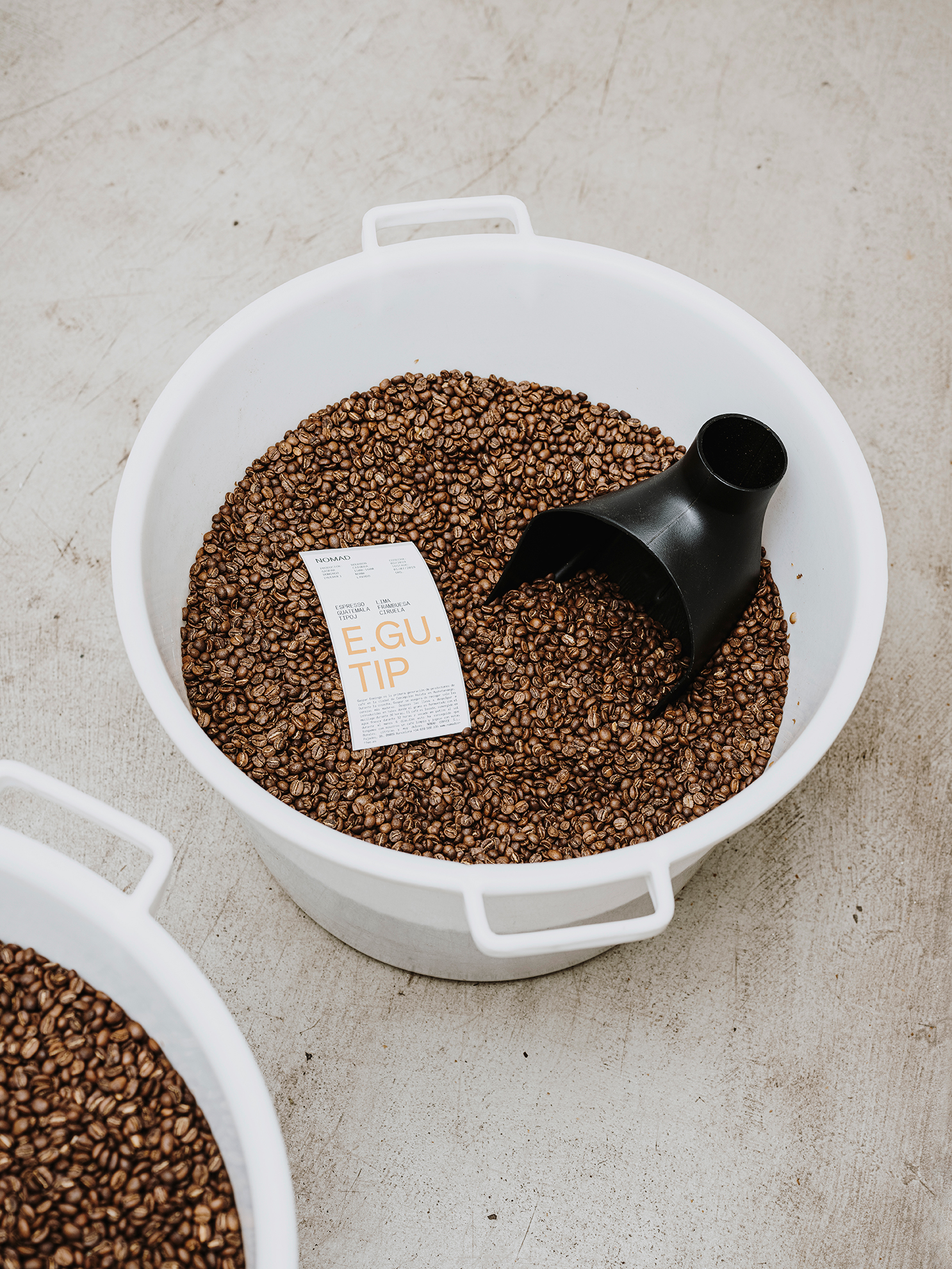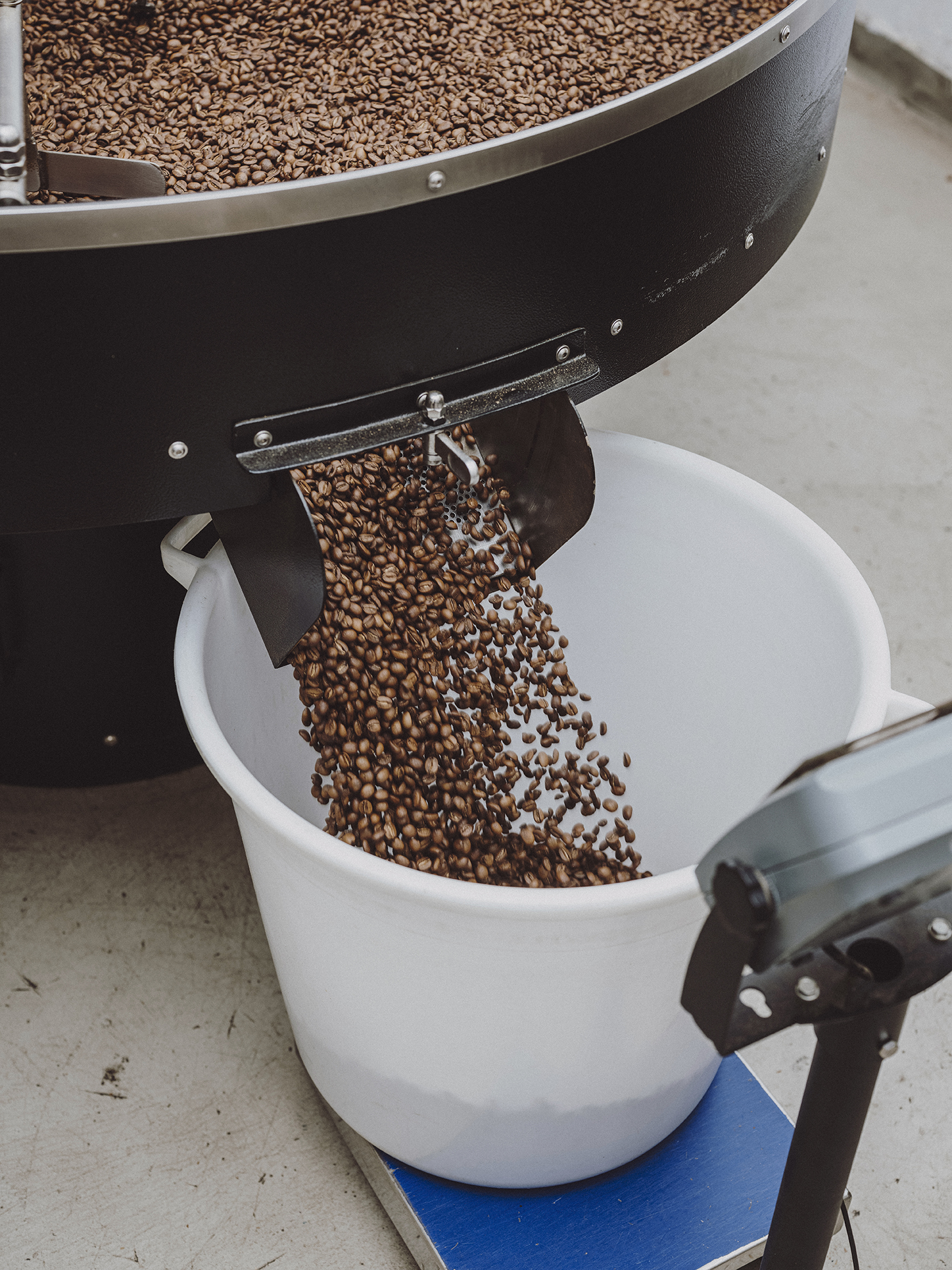When we buy coffee, we tend to focus on its origin and how it has been fermented, but it’s the roasting that clearly and directly explains the aromatic profile that coffee will have.
The flavor of a cup of coffee is largely determined by the roast given to the green coffee beans. Based on the sensory characteristics of each coffee, defined by its terroir (combination of soil, climate, variety, cultivation care, and fermentation process), we choose a specific roast for each batch.
For instance, if we have a coffee with floral notes, we apply a roast suitable for a filter, which is a brewing method that enhances those notes. On the other hand, if the coffee is dominated by nutty and chocolatey notes, we roast it for espresso. At NOMAD COFFEE, we follow this approach: we prefer very fruity, floral, and herbal coffees for filter, and sweeter, fuller-bodied coffees for espresso. However, we never forget those of you who enjoy a chocolatey filter or a floral and fruity espresso.

Espresso Roasting
Here’s how we do it: for espresso, we roast the coffee slightly longer and at a higher exit temperature compared to coffee roasted for filter. The goal is to caramelize sugars more and add a bit more body to the cup. Our Colombian espresso, “El Roble,” perfectly showcases its notes of peach, floral honey, and naranjilla (a tropical fruit) with this roast.
Filter Roasting
On the other hand, filter roasts aim to enhance the enzymatic notes of coffee – those fruity, floral, and herbal characteristics that develop during cultivation and processing. Our Kenyan coffee, “Nyanjuki” is a good example with its blend of aromas such as caramel, orange blossom, and watermelon, resulting in a coffee with bright acidity and creamy body.
Roasting types
Moreover, there are various roast types. According to the general classification, from more acidic to more bitter, we have light, medium, medium-dark, and dark roasts. They are identified by the color of the roasted beans and have subtypes such as light, cinnamon, medium, high, city, full city, French, and Italian. While some roasters adopt a single profile for all their coffees, known as omniroast, at NOMAD COFFEE, we use a light roast where the coffee’s origin shines through and oils do not surface on the bean. Specifically, we use a light roast for filter coffees to highlight their fruity aromas, and a cinnamon roast that is ideal for our espressos.
Learning to Roast Coffee
If you ever aspire to transition from being a barista to a coffee roaster, the first thing to know is that it doesn’t require extensive equipment. Learning to roast begins with learning to taste, identifying aromas, flavors, acidity and body types, as well as grain and roast defects. Only through this process can you evaluate the coffees you roast, improve your roasting skills, and experiment with different paths and profiles until you find the formulas you enjoy, that suit you, and your target audience.
The learning times are relative. To learn tasting, you can enroll in our course at the Coffee Academy, where we’ll prepare you for the Q Grader certification. If you start working at an established roaster, the protocols and identity will already be defined, and it will take only a few weeks to replicate their roasts. However, to master roasting and create a coffee roasting business from scratch, it will take years. You’ll need to find the right machine and coffees that suit your needs, understand their operation thoroughly, create work protocols, and eventually establish your personal roasting profile. You’ll invest a lot of effort in taming the roasting machine, which significantly influences the roasting process as each machine distributes heat in a unique way, with different probes and positions, resulting in distinct roast profiles.

Step-by-Step Roasting
These are the most important steps we follow when roasting coffee using our two Probat UG22 machines. First, we conduct a test roast with a small quantity in our Ikawa Pro50. Always keep in mind that the pre-heating protocol lasts 1 hour, the protocol between roasts is 8 minutes (including 6 minutes of cooling to stop the roast), and the actual roast time ranges from 10.5 minutes (filter) to 13 minutes (espresso), depending on the coffee and its roasting profile. Moreover, each coffee will require a different espresso or filter profile, as each one has its distinct roasting profile and behaves differently inside the roaster. Therefore, you must make the necessary adjustments according to the batch.
1. Check the temperature of the green beans.
2. Monitor the ambient temperature in the roasting area.
3. Create a pre-heating protocol and a protocol between roasts, and strictly follow them.
4. Verify the entry temperature of the green coffee into the roaster.
5. Control the RoR (Rate of Rise), which is the rate at which the bean temperature increases during roasting. The best results at NOMAD are achieved when this rate is consistently decreasing.
6. Monitor the exit temperature.
7. Evaluate the roasted coffee, that is, taste it.
8. If the profile is not right, make necessary changes and roast again